|

The Veil is a piece of sea silk fabric measuring about 17 by
24 centimetres, placed between two panes and mounted into a decorated frame.
Allegedly, the fabric used to be a little bigger, but now it is the size of a
human face. Throughout centuries the rims were cut off and used as relics (similarly
to the fabric of the Turin Shroud).
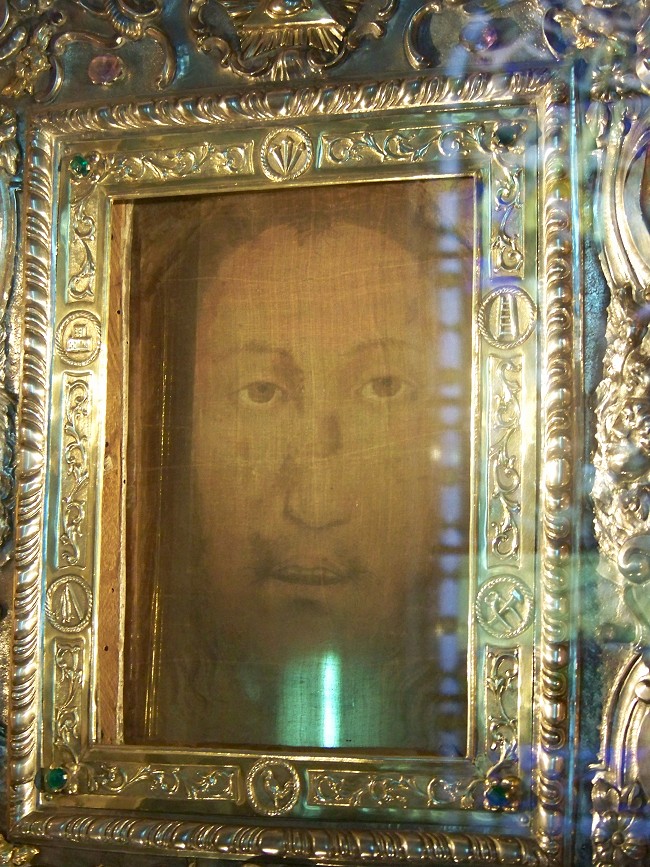
The Face, with visible gaps and reflections; the inner frame with marks left
by woodworms, and the outer frame decorated with the emblems of the Passion (i.e.
the crow, the hammer and pliers, the ladder, nails, scourges, dice); gemstones
in the corners
The Veil has not always been exhibited in this way. It was also folded
lengthwise (one time) and crosswise (three times), which is easily noticeable
because of the lighter lines. The image is practically invisible when observed
against the light and the colours are revealed when one looks at the image from
an angle. The colours change and when an observer moves just a few millimetres,
he/she will see different colouring.
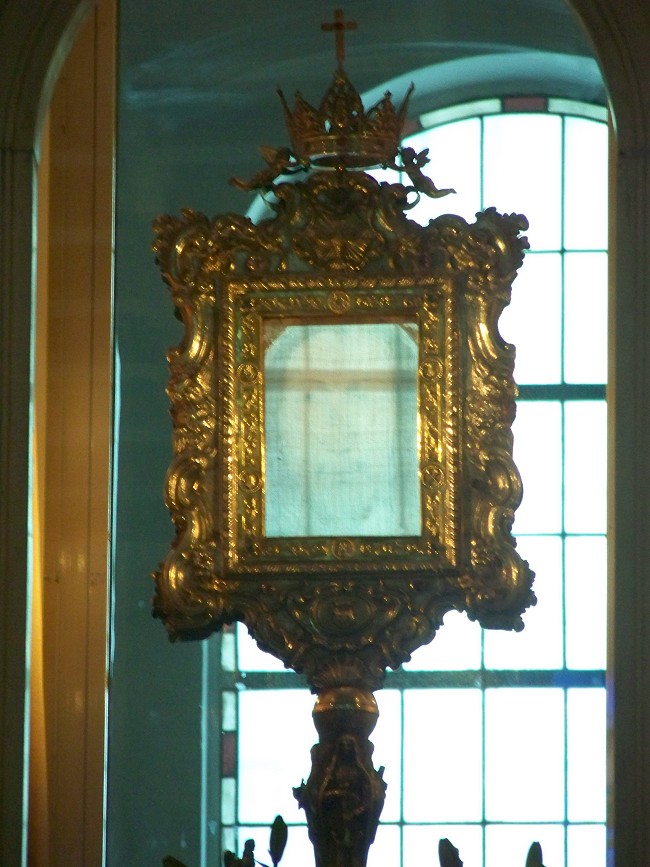
The Face observed with a window in the background
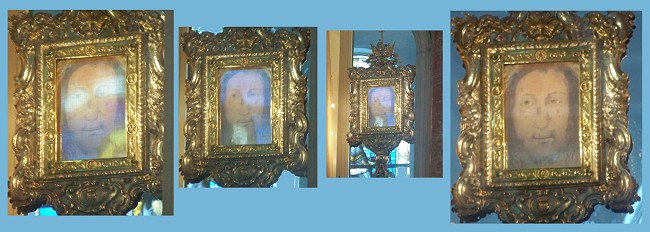
The Face observed from different angles
The Veil may be observed both from the side of the altar and
from the other side, having taken the stairs. The reliquary itself is placed in
an additional glass coffer. However, the veil is not more than 40 centimetres
away from the pane, which makes it possible to have almost direct contact with
the Face.
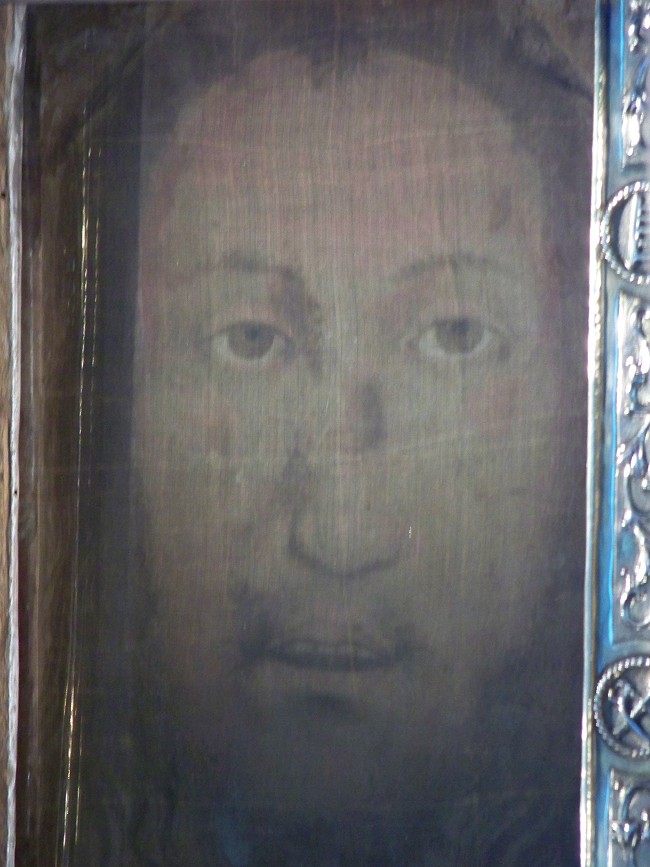
The reverse of the Veil
The conditions are not favourable for taking photos. Poor
lighting forces the use of long exposure time and reduces the depth of field.
The coffer's pane is covered with handprints of praying
people. However, no photo may stand for the direct contact with the
extraordinary relic.
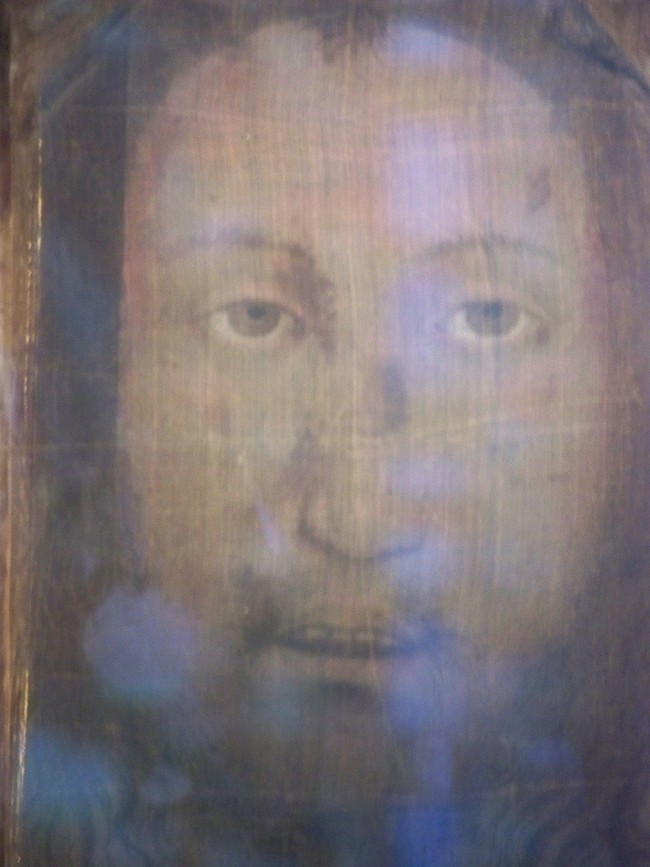
Stains left by the hands and foreheads of pilgrims
The fabric was cropped many times, which left only an outline
of the head. In the top right corner and top left corner one may notice silk
insets which were sewn in to keep the rectangular shape of the image. However,
they have a completely different texture than the original and thus let less
light through.
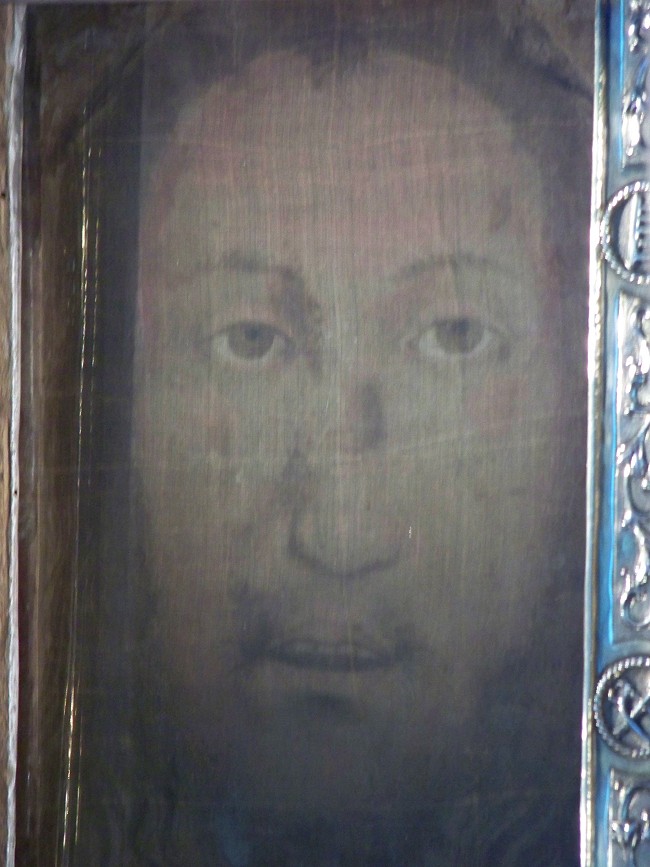
The silk insets
The distinctive strand of hair is visible in the top part of
the forehead. This detail is found on numerous medieval depictions of Christ.
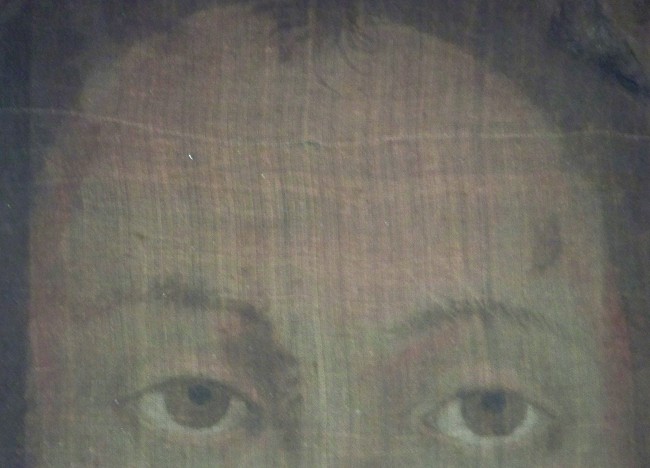
The strand of hair on the forehead
Research has shown that the fibre in areas of the sea silk
fabric depicting the pupils are significantly carbonised. Other areas of the
fabric do not indicate any presence of dyes or paints.
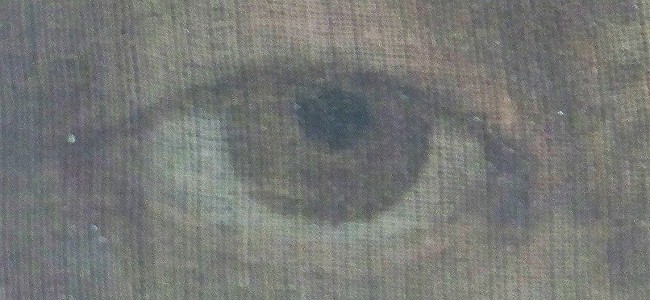
The carbonised areas of the fabric
The fabric is incredibly delicate and hand-woven. Up to this
day it has not been explained how the image was imprinted on the veil.
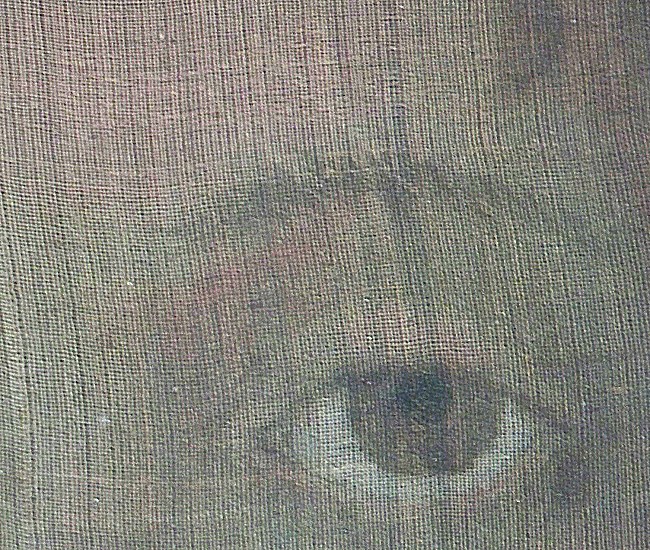
The delicate texture
|